materials sciences
Um das so genannte BOOM, eine selbstentfaltbare Struktur, unter Mikrogravitation zu testen, wurde der Experimentaufbau in eine Fallkapsel integriert, mit einem Dreiachsen-Beschleunigungssensor ausgestattet und per Video überwacht. Mit Hilfe der genutzten Messtechnik konnte die mechanische Selbstentfaltung unter Schwerelosigkeit sehr gut beobachtet und anschließend analysiert werden.mehr...
A dominant feature of fire propagation in microgravity is radiative heat transfer. This mode of heat transfer is mainly dependent on the local soot concentrations. Thus, the quantification of local soot concentrations in microgravity diffusion flames is of great importance for fire safety of spacecraft.mehr...
The study of the processing-structure-properties-performance relationships of Zinc Sulfide (ZnS) materials and the paradigm to improve efficiency of these materials is the focus of the diZplay project. This project implements material synthesis in microgravity conditions to neglect convection and buoyancy driven forces during the synthesis of materials.mehr...
Das 2diZplays-Vorhaben stellt in Grundzügen die Weiterführung des diZplay-Projektes, welches im Rahmen der DLR-INNOspace-Initiative begonnen wurde (FKZ: 50 RP 1509), dar. Es baut auf den vielversprechenden Entdeckungen und Resultaten des bisherigen Projektes auf. Sinngemäß soll weiterhin Zinksulfid (ZnS) als homogenes Ausgangsmaterial zur Herstellung hocheffizienter Bildschirme mittels Elektrolumineszenz (EL) eingesetzt werden.mehr...
Im Projekt EQUIPAGE wird die Dynamik von granularen Gasen untersucht. Die Effizienz der Anregung eines solchen Ensembles von Partikeln, die Verteilung der kinetischen Energie auf die Bewegungsfreiheitsgrade sowie die Dynamik von Kollisionen und Dissipation (das Abkühlverhalten) stehen im Mittelpunkt.mehr...
This experiment aims on the investigation of the behaviour of granular anisotropic gases in microgravity. Anisotropic granular gases are encountered in a number of situations - in avalanches, sandstorms, dust devils, the formation and motion of dunes, planetary rings, and the asteroid belt, to name a few.mehr...
In order to mitigate the growth of space debris flux rates in strongly populated orbits, it is necessary to remove objects that are considered potentially harmful from there. Such objects, like used upper stages or malfunctioning satellites, are capable of producing high numbers of fragments if hit by space debris or if an explosion occurs.mehr...
The drag force acting on an object moving inside granular materials with and without the influence of gravity shall be investigated via a hybrid experiment to be conducted at the Bremen drop tower. Under gravitational acceleration (1g), the drag force of a drop capsule falling into Styrofoam particles - a granular damper optimized to decelerate the capsule - will be measured by embedded sensors and analyzed in comparison to small-scaled lab experiments and numerical simulations.mehr...
Granular gases are assemblies of mesoscopic particles that can be distributed randomly for extended amounts of time at low density only in microgravity.mehr...
Light from the Sun or a laser beam can be used to transfer momentum to matter and displace low-mass objects. Space agencies have successfully tested the solar sail technology for low-Earth orbit applications, navigation control, and Solar System exploration, being IKAROS (2010) the first demonstration of spacecraft with a sail as primary propulsion system.mehr...
Die Untersuchung von verdünnten Systemen granularer Teilchen (granulare Gase) hat eine große wirtschaftliche Bedeutung in der Verfahrenstechnik und ist gleichzeitig ein Gebiet der statistischen Physik, bei dem bisher noch grundlegende Lücken im Verständnis bestehen. Einerseits erzeugen moderne Wirbelschichtverfahren ein Fluid-Feststoff-Gemisch für Trocknungs- und Verfeuerungsverfahren, was als gravitationsgetriebene komplexe Mehrphasenströmung beschrieben werden muß.mehr...
Containerless measurements of thermophysical properties on liquids allow high accuracy measurements over a wide temperature range with unmatched precision. Nevertheless, the experimental data suffer from gravitational effects, like a non-spherical shape or buoyancy convection on the levitating liquid.mehr...
The proposed experiments on granular media in the SMD experiment focus on the generation of steady dynamic states of unsuspended granular media close to the jamming transition. Such steady states cannot be achieved on ground, where gravitation and agitation lead to convection and inhomogeneous dynamics.mehr...


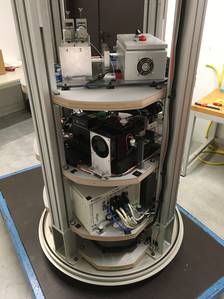
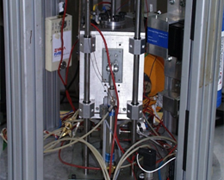
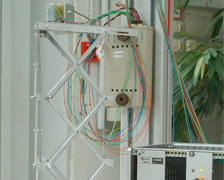
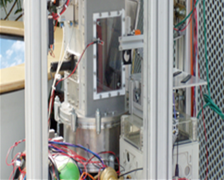
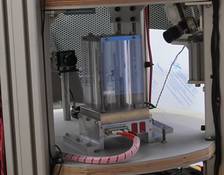
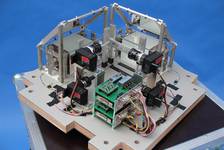
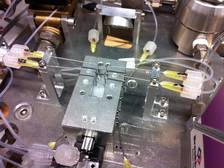
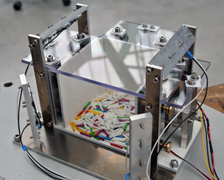
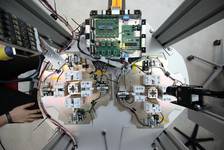
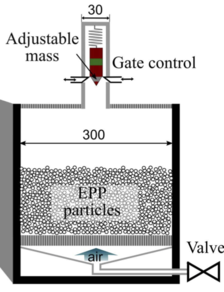
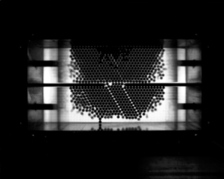
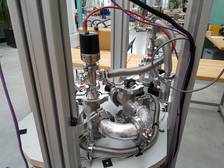
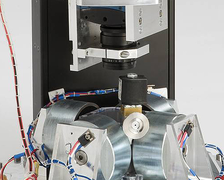
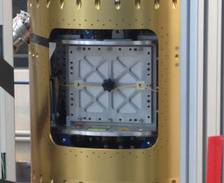
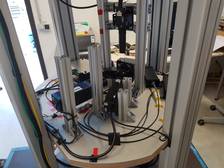
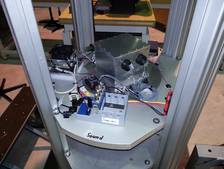
 "
"